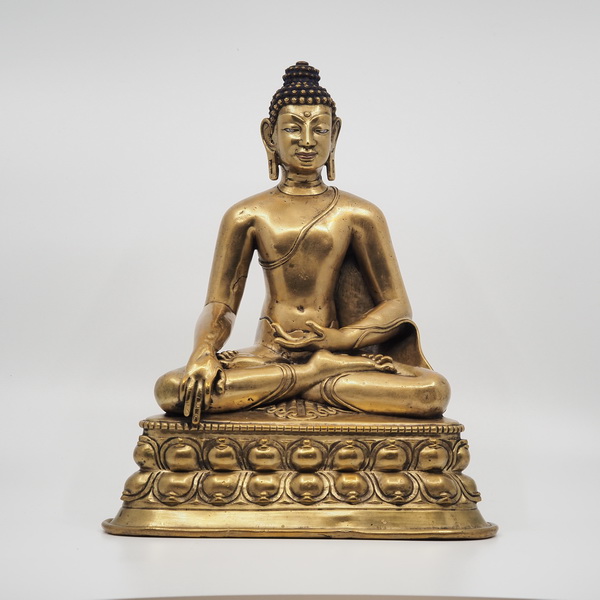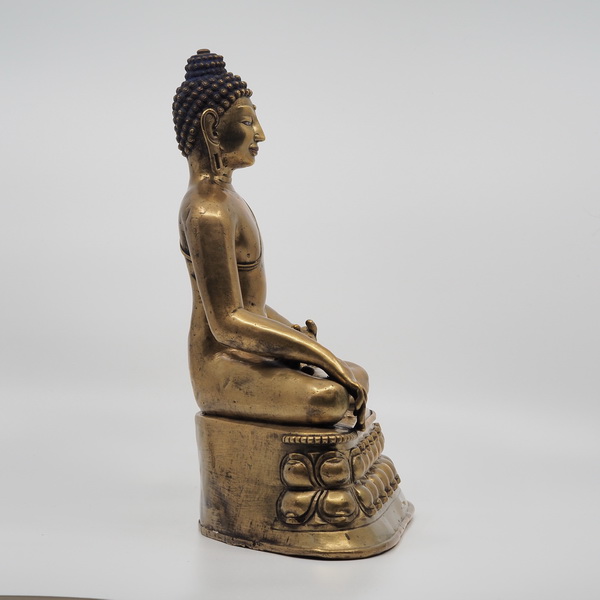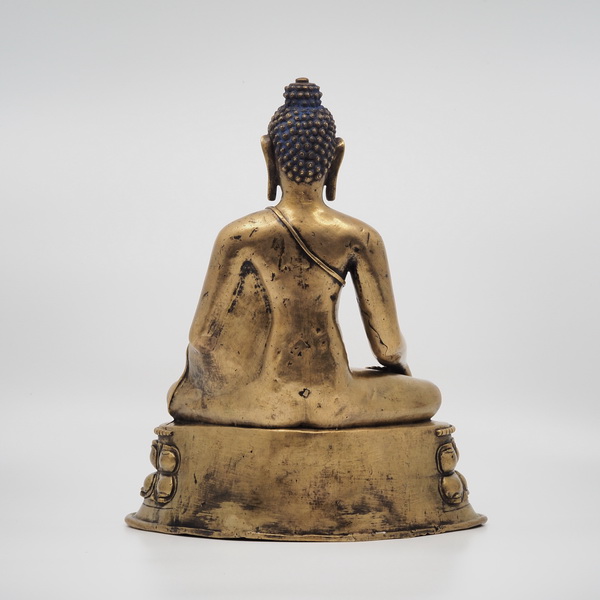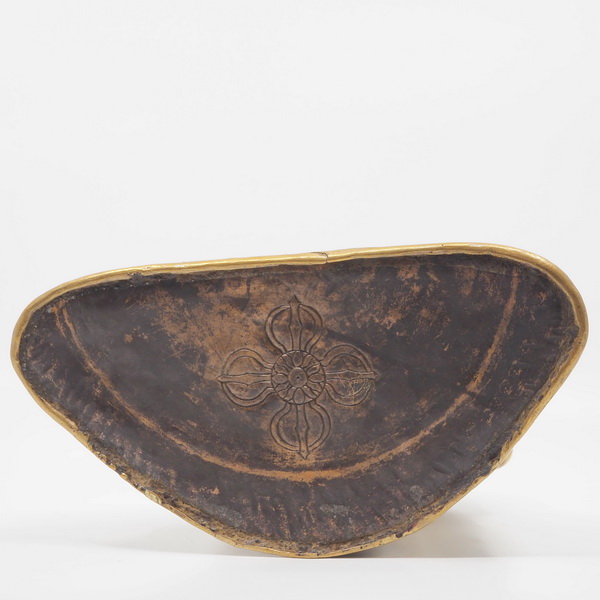Buddha Shakyamuni – The Historical Buddha
ABS 326
Code: ABS 326
Country: Tibet
Style: Tibetan Brass Tradition
Date: 1200 - 1250
Dimensions in cm WxHxD: 27
Materials: Brass
Brass; hollow cast in one piece. The eyes are inlaid with silver and the lips with copper. The hair retains blue pigment. The bottom of the pedestal is sealed with a copper plate decorated with a double vajra (visvavajra).
This image represents the historical Buddha Shakyamuni (Tib.: Sakya thub pa) and commemorates the defeat of Mara (maravijaya) at Bodhgaya (District Gaya, Bihar, Northern
India), which represents one of the “eight great places” (asfamahasthana) of Buddhist pilgrimage. The Buddha is seated in the diamond attitude (vajraparyanka) on a double lotus pedestal with an upper beaded border. He rests the left hand in the lap and extends the right hand in the gesture of touching the earth (bhumisparsa-mudra). The upper monastic garment (uttarasanga) is rendered in a transparent fashion without folds and covers the left shoulder only. This Buddha image is of a rare beauty which is enhanced by the smooth surface as a result of daily worship during long period of times. Extensive wear due to ritual bathing and drying with a cloth is often the case with images which have been worshipped by monks or nuns in the privacy of their cells or lay practitioners in their homes. The contrast in colour between the different alloys add another aspect of beauty. The face with its soft expression almost appears to be melting. Another aspect of its beauty is represented by the well-proportioned harmony between the Buddha image and the lotus throne. The curved rim of the monastic garment at the left arm is a clear indication that this image is early and might date from the 2nd half of the 12th century. Centuries of ritual use have rendered the surface with a mirror like quality. Another particular characteristic of this Buddha statue are the full lips.
This image represents the historical Buddha Shakyamuni (Tib.: Sakya thub pa) and commemorates the defeat of Mara (maravijaya) at Bodhgaya (District Gaya, Bihar, Northern
India), which represents one of the “eight great places” (asfamahasthana) of Buddhist pilgrimage. The Buddha is seated in the diamond attitude (vajraparyanka) on a double lotus pedestal with an upper beaded border. He rests the left hand in the lap and extends the right hand in the gesture of touching the earth (bhumisparsa-mudra). The upper monastic garment (uttarasanga) is rendered in a transparent fashion without folds and covers the left shoulder only. This Buddha image is of a rare beauty which is enhanced by the smooth surface as a result of daily worship during long period of times. Extensive wear due to ritual bathing and drying with a cloth is often the case with images which have been worshipped by monks or nuns in the privacy of their cells or lay practitioners in their homes. The contrast in colour between the different alloys add another aspect of beauty. The face with its soft expression almost appears to be melting. Another aspect of its beauty is represented by the well-proportioned harmony between the Buddha image and the lotus throne. The curved rim of the monastic garment at the left arm is a clear indication that this image is early and might date from the 2nd half of the 12th century. Centuries of ritual use have rendered the surface with a mirror like quality. Another particular characteristic of this Buddha statue are the full lips.






